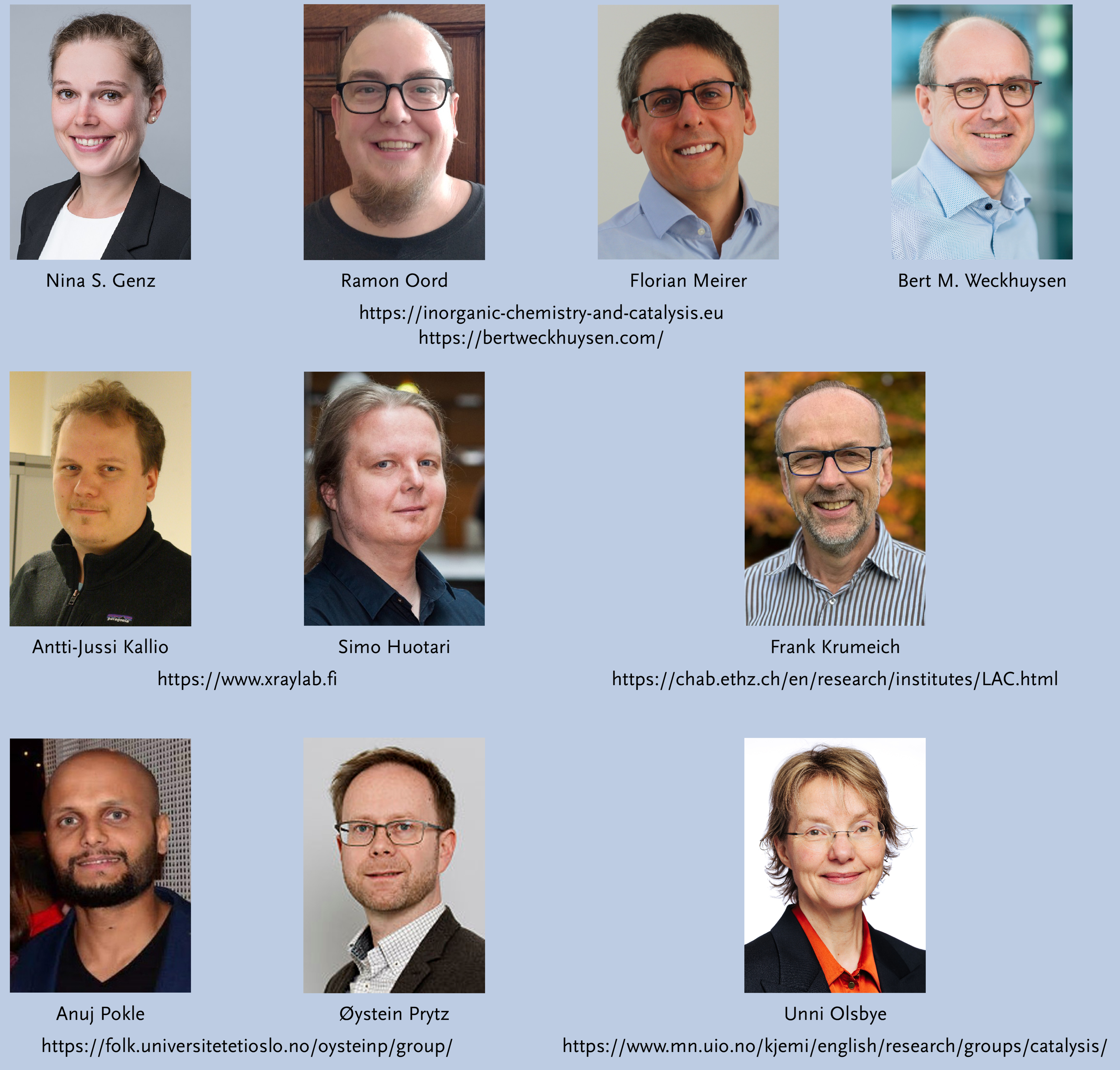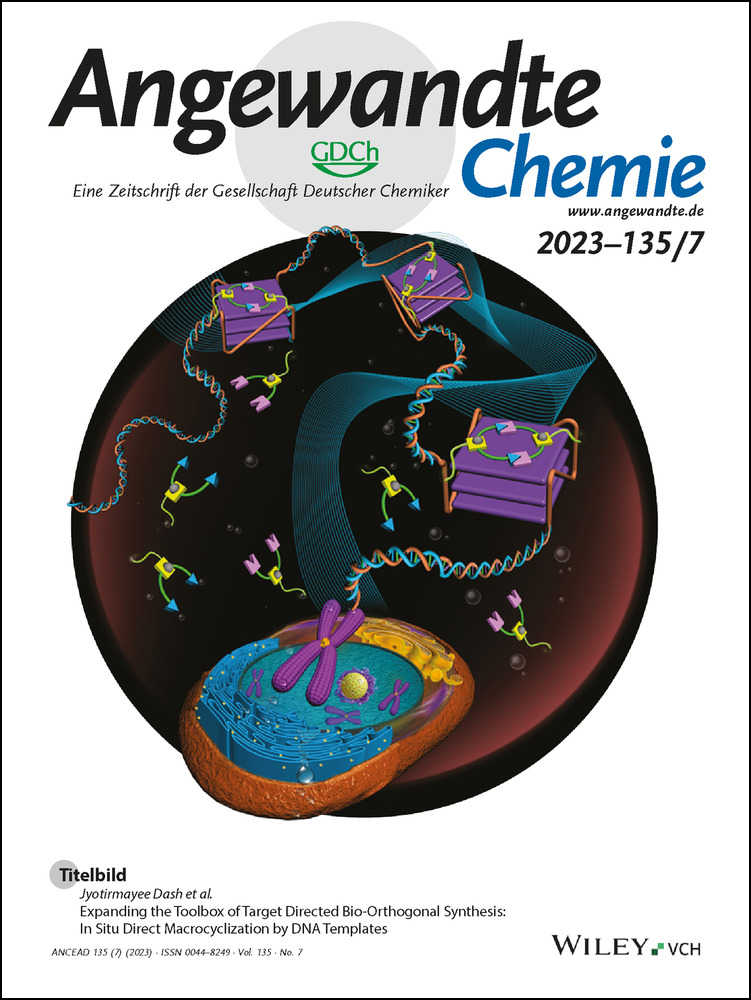A Collaboration for Guiding the Rational Design of Multielement Solid Catalysts
Abstract
This invited Team Profile was created by the Inorganic Chemistry and Catalysis group, Department of Chemistry, University of Utrecht, the Netherlands; X-ray Laboratory, Department of Physics, University of Helsinki, Finland; Laboratory of Inorganic Chemistry, Department of Chemistry and Applied Biosciences, ETH Zürich, Switzerland; Center for Materials Science and Nanotechnology, Department of Physics, University of Oslo, Norway; and Catalysis Research Center, Department of Chemistry, University of Oslo, Norway. They recently published an article on their successfully designed laboratory-based setup enabling operando multi-edge X-ray absorption near-edge structure (XANES), which offers possibilities for advanced catalyst characterization, as demonstrated for mono-, bi-, and trimetallic CO2 hydrogenation catalysts consisting of Ni, Cu, and Fe. Synergistic effects during catalyst reduction and their influence on catalytic performance were unravelled, guiding rational design of multielement solid catalysts for various applications. “Operando Laboratory-based Multi-edge X-ray Absorption Near-Edge Spectroscopy of Solid Catalysts”, N. S. Genz, A.-J. Kallio, R. Oord, F. Krumeich, A. Pokle, Ø. Prytz, U. Olsbye, F. Meirer, S. Huotari, B. M. Weckhuysen, Angew. Chem. Int. Ed. 2022, e202209334; Angew. Chem. 2022, e202209334.

Chemistry is all about interacting elements and systems …
Our scientific collaboration does not only comprise four different countries, i.e., the Netherlands, Finland, Norway, and Switzerland, but also four different fields, namely, Chemistry, Physics, Materials Science, and Analytical Science. With conducting our joint research work we clearly could experience that such an interdisciplinary approach is beneficial and allows to combine diverse important knowledge and skills necessary to develop the new operando machine to investigate functional nanomaterials, such as solid catalysts, under relevant reaction conditions.
Shared experiences bond us together …
Communication at different levels was the key to our success. It was important to always keep the communication open and frequently discuss the next steps likewise the different technical issues we have encountered. Besides the communication on the level of supervisors/professors, also that between professors and postdoc/PhD/scientific staff, postdoc/PhD and technicians, and the daily communication between Nina and Antti-Jussi were essential for our joint research work. However, the importance of communication went beyond to other levels. As the University of Helsinki was closed from public during the COVID-19 lockdown even the gas bottle delivery turned into a real challenge. Enabling to open the delivery doors and accepting the delivery without speaking Finnish, while the driver not speaking English showed once more that communication is key, even when speaking different languages. Overall, the visits of Nina turned out to be challenging due to the special times, but also rewarding from a professional as well as cultural and social point of life.
It takes energy to explore the unknown …
It is clear that the operando spectroscopy and microscopy field has fully transformed. Previously, chemical reactors as well as lab-based analytical methods have been moved into the experimental hutches of synchrotron light sources, however, now, we have turned it around: the X-rays moved back into the laboratory and chemical reactors and analytical equipment for online gas analysis have followed. With our latest research work, we enter a new era of advanced catalyst characterization, which offers new possibilities, e.g., high-throughput and long-term experiments to assess for example catalyst stability, but also the possibility to perform detailed characterization of toxic or not easy to handle chemicals and materials, which would not be allowed to be transported to or investigated within a synchrotron facility. We foresee a broad applicability of operando laboratory-based X-ray absorption spectroscopy not only in the field of catalysis, but also in the broader fields of physics, chemistry, engineering, as well as in materials and environmental sciences. It is important to stress that we see the tool as fully complementary to synchrotron-based studies, which are superior in e.g., brilliance and hence in resolution in both time and space.
New tools and techniques offer new perspectives …
The cooperation between the X-ray laboratory in Helsinki and the Inorganic Chemistry and Catalysis (ICC) group in Utrecht was already in place, and we worked already together to successfully establish the first in situ and long-term laboratory-based X-ray absorption near-edge structure (XANES) analysis of cobalt-based Fischer–Tropsch synthesis catalyst materials. As we got very encouraging comments on our initial two joint scientific publications by many colleagues in the field, we were confident to take the next step. When Nina started in the Utrecht group, Bert and Florian asked her if she would like to continue the collaboration with the Helsinki group and contribute to the next important step, which was to make a fully operational operando laboratory-based XANES setup. As Nina was really eager to do so, we decided that she should go to Finland and that's how her half year research stay in Helsinki started.
Kinetics, thermodynamics, entropy … luck?
We kicked-off our collaboration during the peak of the COVID-19 pandemic when travelling was only allowed for business reasons and strict test and quarantine regulations had to be followed. After finishing two weeks of quarantine during a typical Finnish winter, Nina was allowed to start working with Antti-Jussi and Simo in the Helsinki lab. While designing and testing the first operando laboratory-based XANES setup, it became clear that technical support by Ramon, a technician from the Utrecht group, via virtual briefings turned out to be crucial, even including work which Nina and Antti-Jussi never did before, which was crucial and necessary under these circumstances. Also the frequent updates and discussions together with Florian and Bert were limited to virtual versions without seeing the setup in real life. We believe that here the different technical challenges are not fully coming alive, but we succeeded to have the setup working and perform a wide range of studies on monometallic, bimetallic and even trimetallic catalyst materials for catalytic CO2 hydrogenation. After finishing the operando XANES experiments on the different catalyst materials we wanted to expand our collaboration to enable further catalyst characterization, despite the ongoing pandemic. Unni, Anuj, and Øystein obligingly offered their help from Oslo without being able to meet in person. The last piece of the puzzle was finished in times of lower infection numbers and Nina was able to visit Frank in Zürich during the sabbatical period of Bert at ETH Zürich. Spending several days together in the cellar at the transmission electron microscope allowed them to directly guide the analysis from different viewpoints yielding another essential contribution to the research work. Overall, we can conclude that our team spirit drove us to overcome not only the distance between the four involved countries, but also the challenges of finding ways to collaborate during times of rather severe travel restrictions and finally to combine our various knowledge and related expertise, yielding the collaborative research work, of which we are very proud.
Team Profiles highlight how research groups focus their efforts and work together to achieve a common goal. Indeed, it is through the diversity of voices from all parts of the chemistry community that the excellent science published in Angewandte Chemie comes about.




